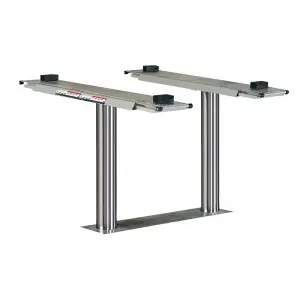****

Exploring the Fascinating World of Cylinders: From Geometry to Engineering Applications and Beyond
Cylinders are one of the most ubiquitous shapes in both mathematics and the physical world. Defined as a three-dimensional solid that consists of two parallel circular bases connected by a curved surface, the cylinder has fascinated scholars and engineers alike for centuries. Its properties and applications span a wide array of fields, including mathematics, physics, engineering, architecture, and even nature. This article will delve into the various aspects of cylinders, exploring their geometric properties, real-world applications, and their significance in both theoretical studies and practical engineering solutions.
At its core, a cylinder is characterized by three primary dimensions: the radius of the base, the height of the shape, and the length of the curved surface. The volume of a cylinder can be calculated using the formula \( V = \pi r^2 h \), where \( V \) is the volume, \( r \) is the radius, and \( h \) is the height. This formula is vital in various domains, including manufacturing, construction, and even culinary arts, where cylindrical containers are used for liquid storage or baking.

Exploring the Fascinating World of Cylinders: From Geometry to Engineering Applications and Beyond

Exploring the Fascinating World of Cylinders: From Geometry to Engineering Applications and Beyond
One of the most intriguing aspects of the cylinder is its symmetry. A right circular cylinder has rotational symmetry around its central axis, meaning that if you were to rotate it, every point on the surface would remain equidistant from the center. This property makes the cylinder particularly useful in various engineering designs, where uniformly distributed mass is critical for stability and strength. For example, countless structures rely on cylindrical supports, such as columns and pylons, providing both aesthetic and functional contributions to buildings and bridges.
In nature, cylinders appear in numerous forms, from the familiar shape of a tree trunk to the structures of certain marine organisms like coral. Even human physiology illustrates the prevalence of cylindrical shapes — the bones in our limbs, the tubes of our blood vessels, and even the configuration of certain organs possess cylindrical qualities. This intrinsic connection between cylinders and the natural world highlights their importance in biological and environmental sciences.
In engineering, the applications of cylinders are remarkably diverse. Think of the everyday objects that utilize cylinder technology: pens, batteries, pipes, and tanks. The complexity of engineering problems can often be simplified by examining cylindrical shapes, as many mechanical systems function on the principles of rotation and linear motion. For instance, hydraulic cylinders are integral components in machinery, providing the necessary force to lift heavy loads or perform precise movements. Similarly, the design of pistons for engines fundamentally relies on the cylinder concept. These cylindrical components convert linear motion into rotational motion, powering vehicles and machinery around the globe.
In the realm of manufacturing, cylinders are critical to processes such as extrusion, where materials are forced through a cylindrical die to create profiles that are uniform and consistent. This technique is widely used in producing everything from metal rods to plastic tubing. Additionally, cylinders serve as the foundation for many containers, such as cans and bottles, which are indispensable in the food and beverage industry.
Cylinders also play a crucial role in scientific research, particularly in the fields of physics and chemistry. Scientific experiments often require cylindrical vessels, such as test tubes and beakers, to conduct reactions and observe phenomena. In thermodynamics, gas behavior within cylinders is studied extensively, leading to the creation of engines and other systems based on the principles of pressure and volume.
In mathematics education, learning about cylinders is fundamental. Students encounter cylinders in various contexts, from basic geometry to advanced calculus, where they explore concepts such as surface area and volume through integration. This geometric shape serves as a bridge linking abstract mathematical theory with tangible real-world examples, reinforcing the importance of mathematical literacy.
In conclusion, cylinders are far more than mere geometric shapes; they are integral to various aspects of our lives, from the textbooks we read to the objects we interact with daily. Their structural properties, natural occurrences, and applications in engineering and science make the study of cylinders both fascinating and essential. As we continue to advance technologically and scientifically, understanding the fundamentals of shapes like cylinders will remain a crucial aspect of innovation and exploration in a multitude of disciplines.ac series
